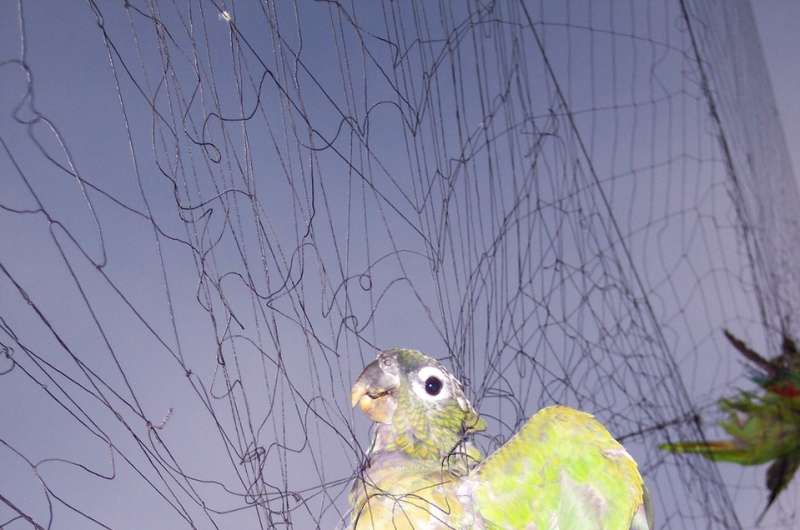More than a 38 percent of the Neotropical parrot population in the American continent is threatened by human activity

More than 38 percent of the neotropical parrot population of the American continent is endangered due the impact of human activity, according to a scientific study published in the journal Biological Conservation.
Hunting for local and international trade and the loss of natural habitat are the main threats for these tropical birds, according to the article led by the experts Igor Berkunsky (National University of Central Buenos Aires) and Juan Masello (Justus Liebig University, Germany). The study involved the collaboration of 101 experts from 76 institutions and non-governmental organizations to determine the main threats affecting 192 populations of 96 neotropical parrots in 21 countries.
From hunting pets to extinction
Capture for the pet trade is one of the main threats to the preservation of wild parrots. From 1980 to 1990, millions of individuals were captured in the neotropic and taken to the United States and Asia. This huge removal of parrots could be the cause of the decline and local extinction of many species, such as the Spix's macaw. In the African continent, the trade of the grey parrot played a main role in its removal in Ghana and other areas of Africa. Currently, some of the most threatened species in Brazil are the Spix's macaw (Cyanopsitta spixii) and the red-tailed amazon (Amazona brasiliensis). Species such as the sun parakeet (Aratinga solstitialis) and brown-backed parrotlet (Touit melanonotus) are quite vulnerable due the small size of their populations.
The Wild Bird Conservation Act (1992) launched by the United States and the permanent ban on wild bird trade set by the European Union (2007) contributed to the reduction of international trade in big markets. However, South America, South Eastern Asia and the Middle East still play an important role in the legal and illegal trade. Some countries of the neotropic have reinforced laws to protect wild parrots, including Mexico and Nicaragua. However, Bolivia, Brazil, Mexico and Peru still have worrying levels of local trade.
When the natural habitat disappears
Agricultural activity, selective large-scale logging and other human activities have altered the natural habitat of these species, which are affected by an average rate of 10 separate threats. This situation puts 38 percent of the populations of neotropic Psittacifiormes at risk, but the real situation could be even worse than estimated, according to the experts.
Juan Carlos Guix says, "It would be necessary to promote actions aimed at the effective preservation of habitats and preserved natural areas. Moreover, it should be necessary to create social and educational programs with the people who live around the natural preserved areas, and provide security and the illegal trade audit with more resources."
More information: I. Berkunsky et al. Current threats faced by Neotropical parrot populations, Biological Conservation (2017). DOI: 10.1016/j.biocon.2017.08.016
Journal information: Biological Conservation
Provided by University of Barcelona


















